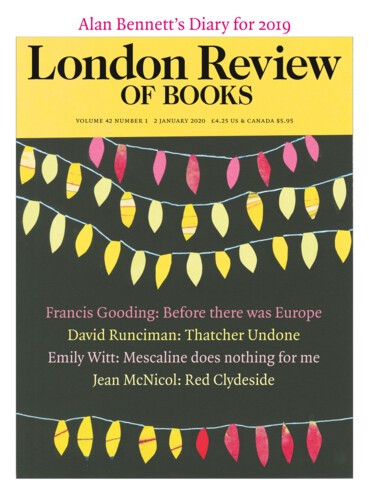Walk south from St Paul’s Cathedral, itself gloriously lit but merely corroborating what we already know and admire of it, over the Millennium Bridge and east along the south bank of the Thames to see the revelatory sequence of Southwark, Cannon Street and London Bridges. Formerly either blanked out by nightfall or dully picked up in a single wash of yellow or blue, they now unpeel in front of your eyes along the riverbank, linked by their calibrated tones and shifting timing, subtle painterly effects achieved by LEDs and computer programming.
Gillian Darley
Gillian Darley is an architectural historian whose books include Excellent Essex and biographies of Sir John Soane, John Evelyn and Octavia Hill, the founder of the National Trust.
When Coventry City Council applied to be the UK City of Culture 2021, and won, what on earth were they planning to do with the city centre? As Owen Hatherley has written, ‘of all of the great reconstruction projects of the first decade after 1945, there’s only one city that never seems to take possession of and pride in what it did: Coventry.’
Victorian industrialists had a particular approach to advertising and branding, with money no object. Where feasible, the factory or mill itself was designed to promote the product. Rather like stained glass windows in medieval churches, easily instructive for the illiterate, the buildings were set free to tell the story. The façade of John Marshall’s linen mill at Holbeck in Leeds, built in the late 1830s, was a magnificent copy of the great temple at Edfu: flax had been cultivated in Egypt, and linen woven from it, since ancient times.
The Building Better, Building Beautiful Commission’s platitudes offer no solution to the UK’s housing crisis. What does it mean to ‘ask for beauty’? The report says that ‘schemes should be turned down for being too ugly.’ But who will be the judge of that? Any volume housebuilder’s sales office will tell you that the house people want to buy is like the one they just saw, ideally the one with the best view and the one they can afford. The market favours the traditional: pitched roof over flat roof, sash window over wrap-round glazing, a tiny porch instead of a doorstep, even – if the budget allows – a chimney in which to lodge a flue pipe. Above all, keep one house away from the next, even if the gap is little wider than an Amazon parcel.
In Letchworth: Pevsner's Hertfordshire
Gillian Darley, 2 January 2020
The volumes of the Buildings of England series initiated by Nikolaus Pevsner unsurprisingly confine themselves to buildings and their settings, but it’s tempting to be distracted by what you already know about a place, about Brocket Hall in Hertfordshire, for instance, the latest county to have its volume revised and expanded by Yale.* The mid-18th-century country house designed by...
Pieces about Gillian Darley in the LRB
Half-Wrecked: What’s left of John Soane
Mary Beard, 17 February 2000
It is hard to resist the conclusion that Soane’s central place in architectural mythology is connected to the fact that he can be ‘reinvented’ more freely than those architects whose buildings do...
Read anywhere with the London Review of Books app, available now from the App Store for Apple devices, Google Play for Android devices and Amazon for your Kindle Fire.
Sign up to our newsletter
For highlights from the latest issue, our archive and the blog, as well as news, events and exclusive promotions.


